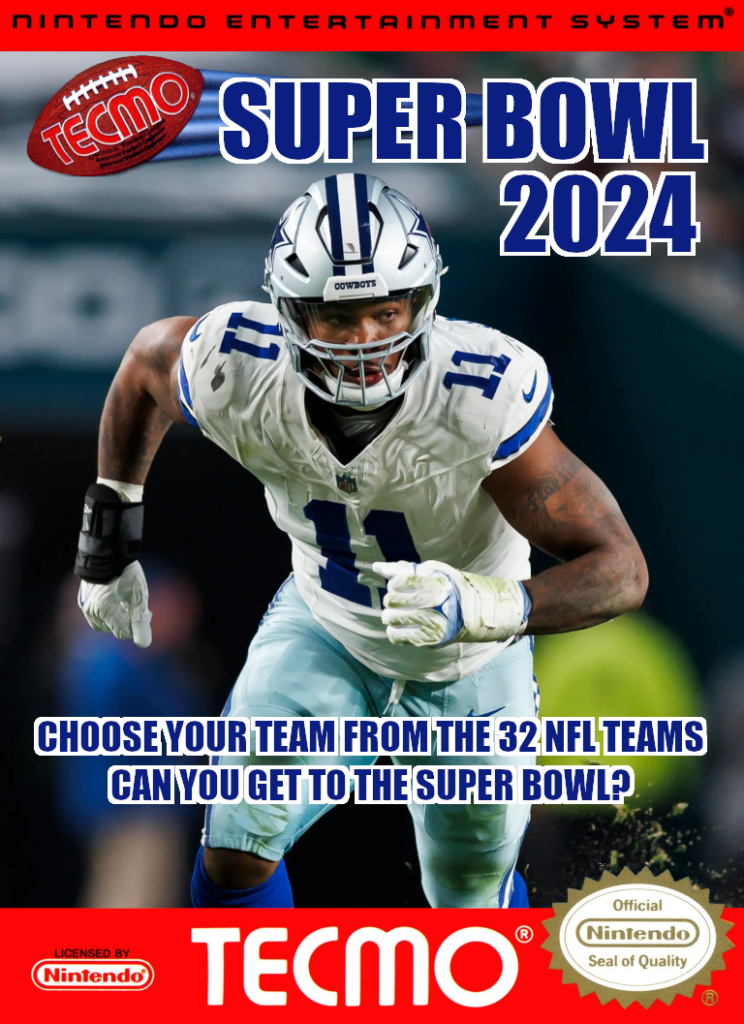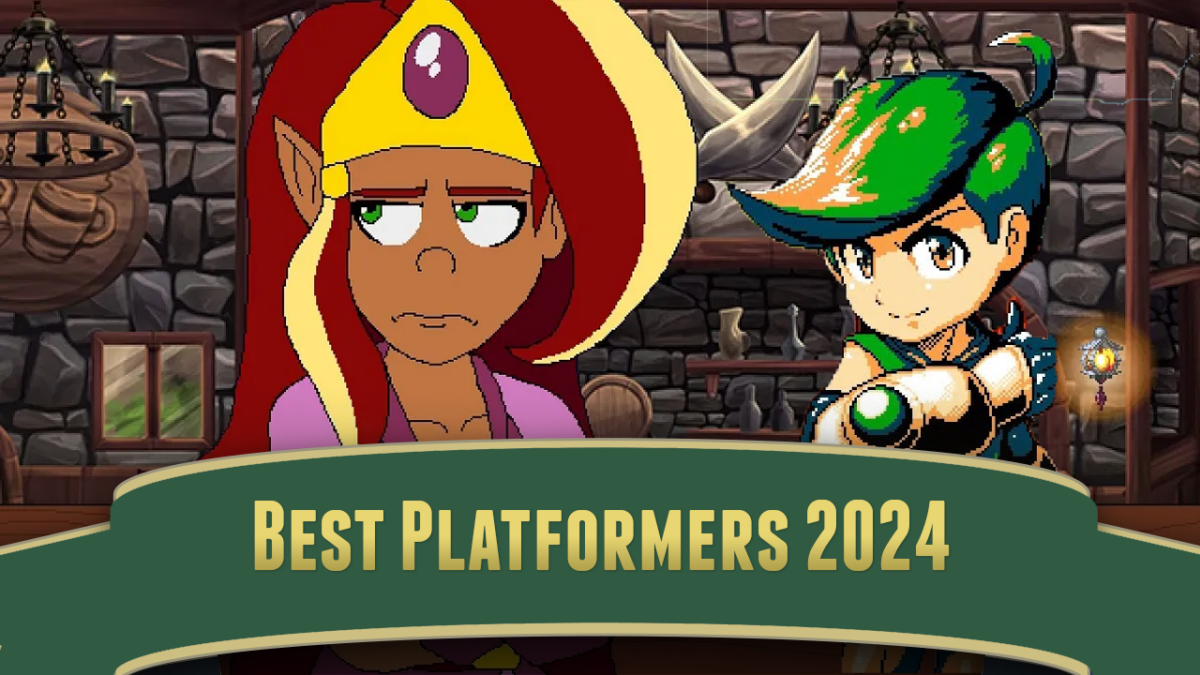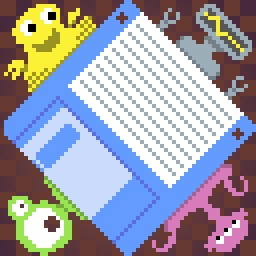
We love it when we find weird and unique indie games to tell you all about! Our alien friends to the left herald these occasions.
This one’s another of Paul Hammond’s series of classic arcade games recreated in Pico-something. Most of these have been in Pico-8, but today’s find uses its more-powerful successor, Picotron. To us end users though, the result isn’t that different.
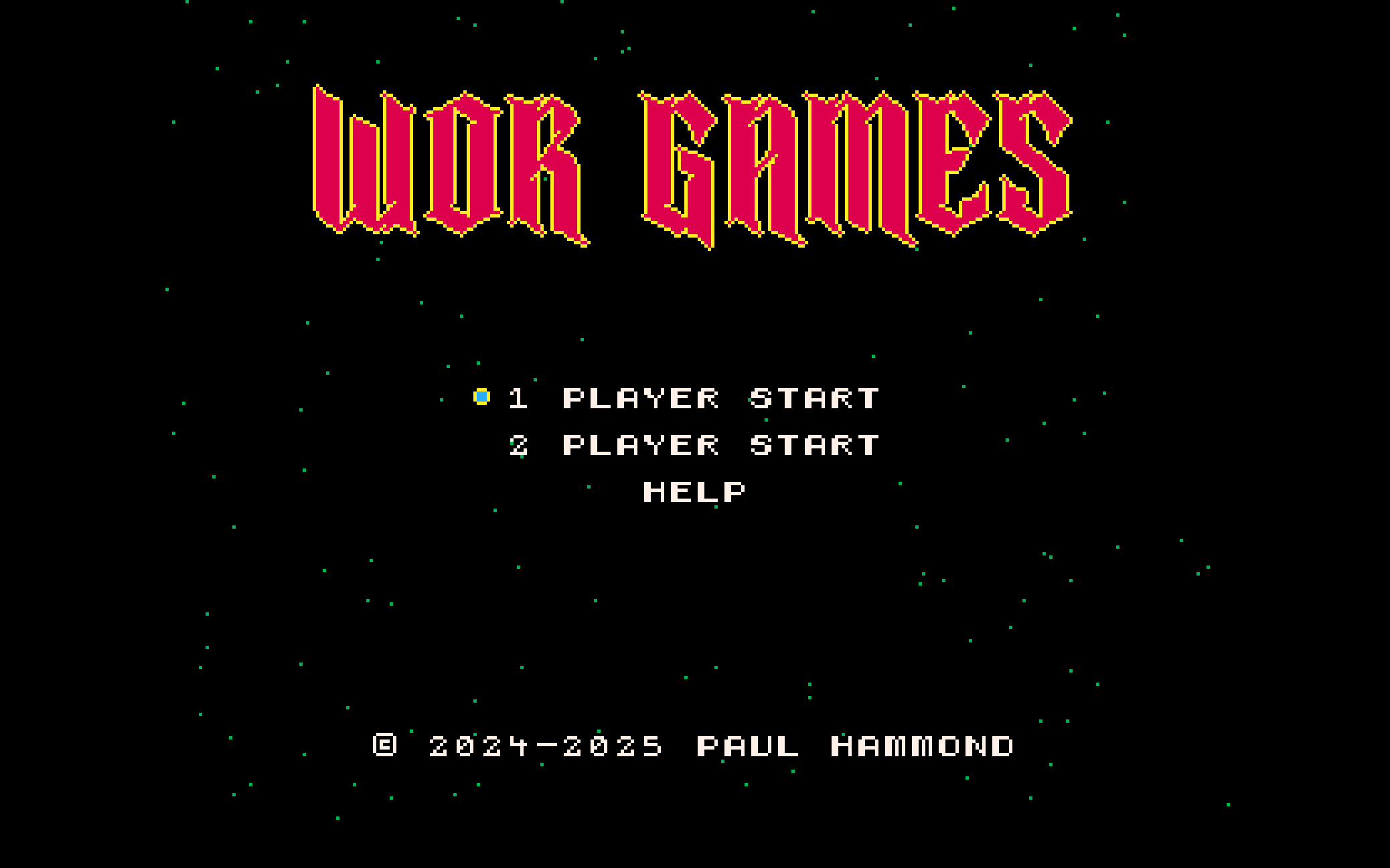
Wor Games is a remake of Bally’s classic arcade game Wizard of Wor, probably the most popular game made for its Astrocade-based hardware, interesting for being an early framebuffer-based game when memory was very expensive, instead of tile-based, and as a consequence only having four colors: black, blue, yellow and red. Wor Games largely holds true to that, but adds a couple of extra colors.
Both Wizard of Wor and Wor Games are shoot-or-be-shot maze games. Wizard of War could be played either by one player or by two co-op (although players could easily blast each other). Wor Games played in one-player mode adds a computer-played helper. The helper does a good job of killing the monsters. It doesn’t try to kill the human player, but neither does it make an effort to avoid shooting them, so be wary of accidental shots.
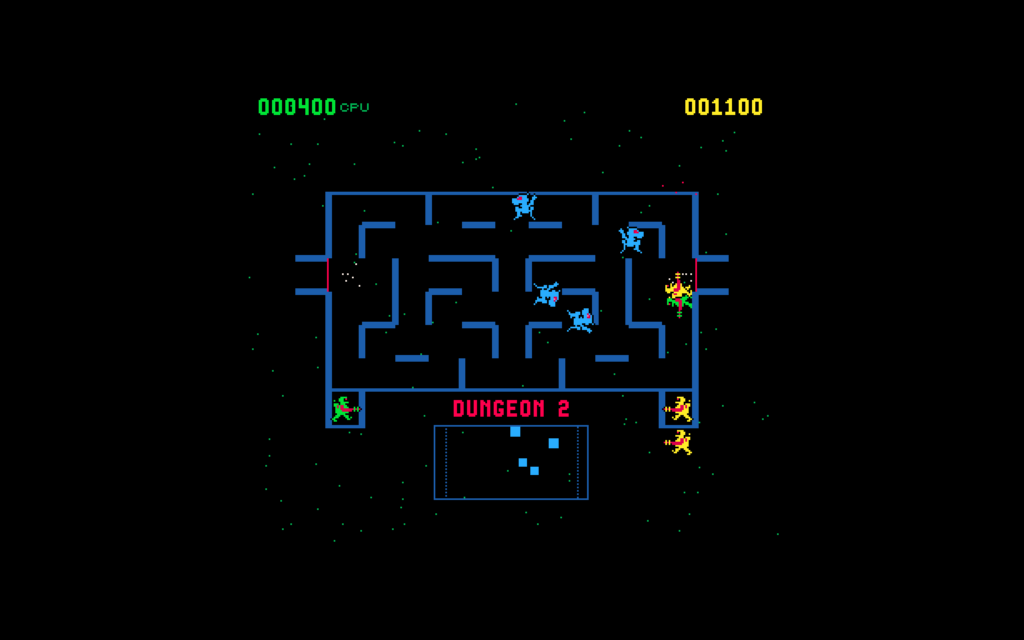
Each maze has a number of monsters, and more spawn in over time. Blue monsters are relatively slow, yellow ones faster, and red ones faster still. All three kinds can shoot at you, but the higher-difficulty monsters have much faster reactions to your presence. Monsters move randomly in large part, but usually make an effort to stay out of your line of fire. This forces you to move in closer, and they’re never more dangerous than when they’re just around a corner from you, and randomly decide to pounce on you from the side.
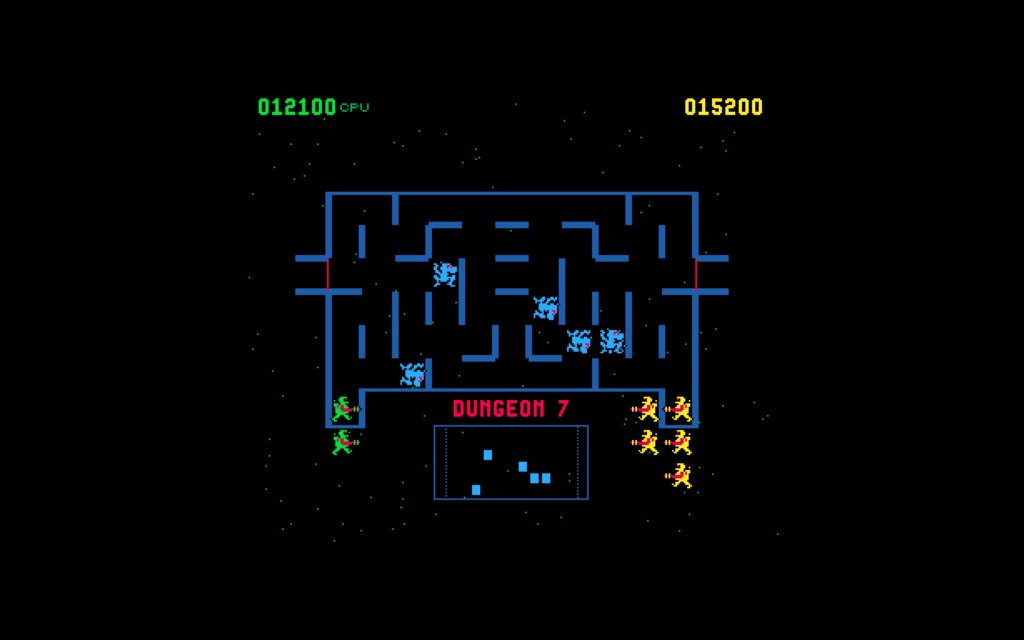
The game simulates line-of-sight for yellow and red monsters, who have the extra property of only being visible to you if you’re nearby, or else visible down corridors. Even if they aren’t visible on the main screen, their locations can be deduced by occasional particle effects, or by letting your gaze stray to the radar display at the bottom of the screen. Taking your eyes off the main arena gives them the perfect chance to walk into your corridor and shoot you. Be wary.
After a number of monsters are blasted that the game decides to be enough, the level may end. Or, alternatively, you may be blessed (cursed) by a visit by the Worluk. The Worluck’s a fast-moving critter that doesn’t shoot at you, but rushes around so quickly that shooting it is a big hassle. It moves randomly too, but is kind of trying to reach one of the exit doors at the sides of the arena. If it makes it to one, it escapes, too bad. But if you can shoot it, you and your partner both earn an extra life, and the next level will be proclaimed, to dramatic music, to be a DOUBLE SCORE DUNGEON! Blam!
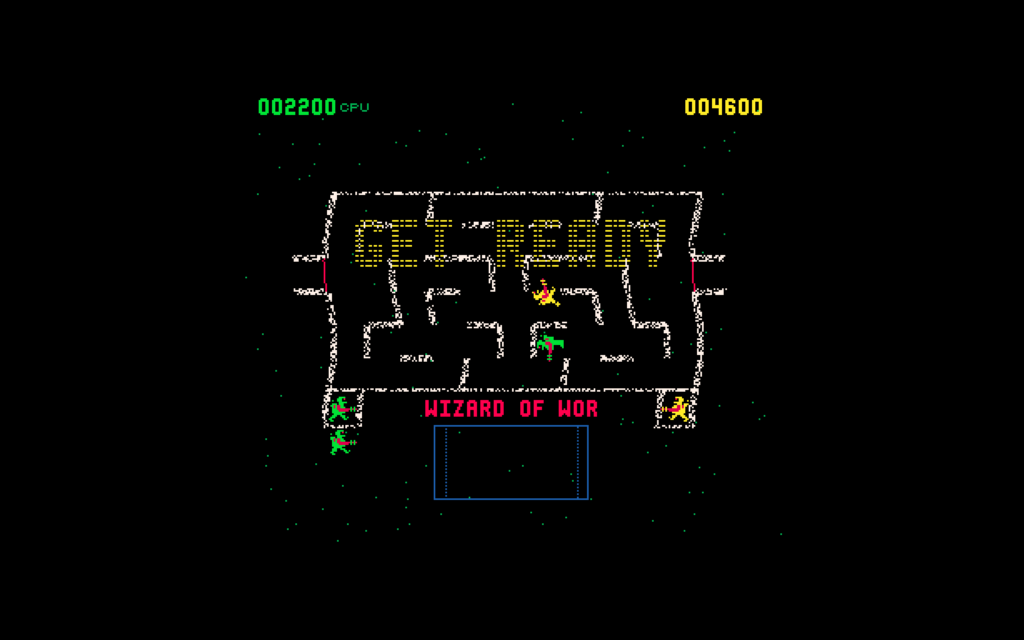
What’s more sometimes, if you dispatch the Worluk, you’ll be in for a visit from the Wizard of Wor himself, a purple-robed freak who’s fast, sneaky, and can shoot you too. He’s worth a bucket of points if you can kill him, and even more if the DUNGEON is DOUBLE SCORE. Blam, again!
In addition to the basic “Arcade” mode, Wor Games has two alternate difficulty levels, and a special mode that makes the base game into something resembling Pac-Man. It fills the screen with dots, and until you or your partner have collected every one of them, the monsters will keep respawning. Some of the dots are large, and act like Pac-Man’s Energizers, affording you invulnerability (can’t be harmed) and invincibility. (Kills enemies on contact. Why do I have to explain these things?) If you don’t get to an Energizer-dot fast enough though it hatches, resulting in a tiny new monster that you have to kill. The best plan seems to be to dash and collect all the big dots you can at the start of the board, since if you leave them be they’ll just make more problems for you.

Both games, the original Wizard of Wor and Wor Games, are interesting for feeling easy enough to convince you to play time and time again, and yet each game is over so fast that you wonder why you keep dying. One reason is that the controls are a bit weird. Your Worrior’s movement is locked to a grid, and you can only shoot in four directions. If you’re partway into an intersection and decide to go back, sometimes your clumsy fightyperson will decide to step forward instead and get blasted. It’s sort of how Link in the original Legend of Zelda tended to get a bit slippery if you tried to go diagonally, but here the grid is even coarser, and all shots are fatal.
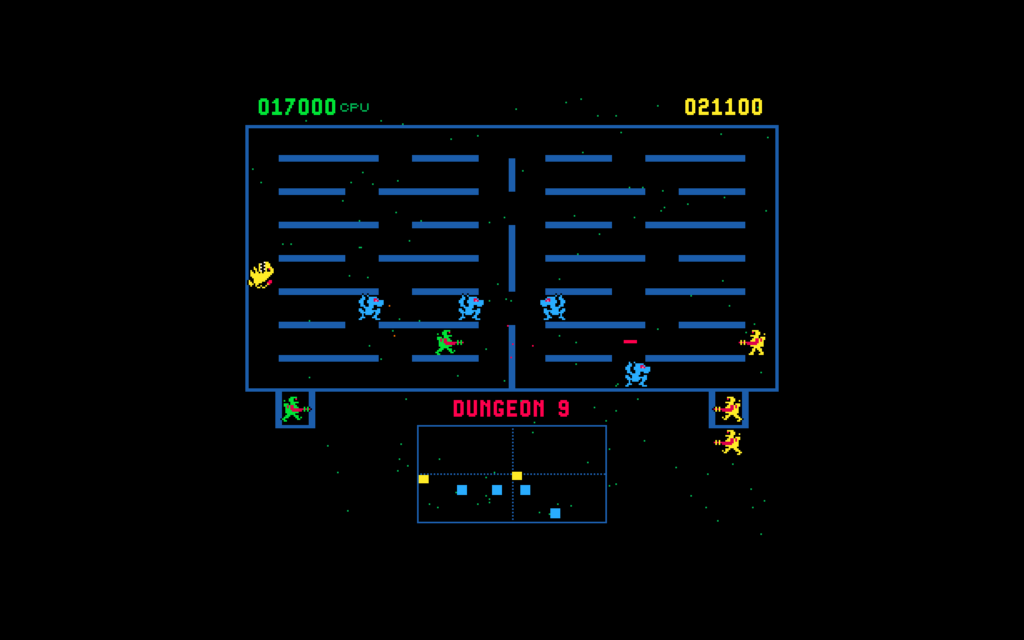
The original arcade game was a throwback, even at the time. I note that it, a four-color arcade game with coarse pixels, was released the year after Pac-Man’s US release, by the same company no less! Wizard of Wor used its weird CGA-like color scheme and menacing audio to effective advantage ago. Its world felt strange and oppressive because of it, and so it doesn’t seem like it’d be nearly the same game with more powerful graphics and sound hardware, and so it is with Wor Games. While Picotron is a purposely-limited fantasy console/workstation, Wor Games restricts its visuals even further, not to the limits of the arcade game, but not too far from them either. It’s an entertaining play, and while your games will probably end very quickly, you can always try again.
Wor Games (by Paul Hammond on itch.io, $0)


